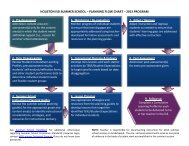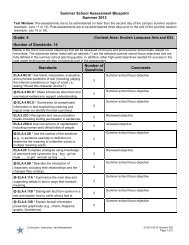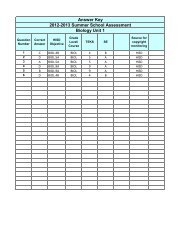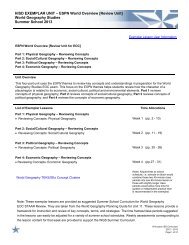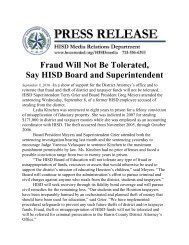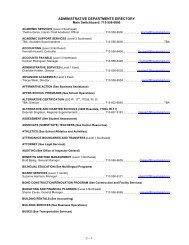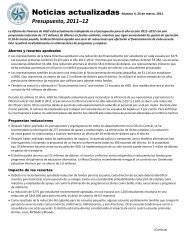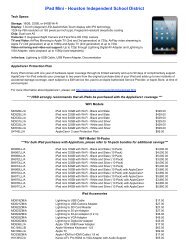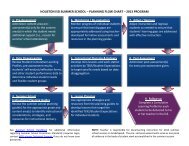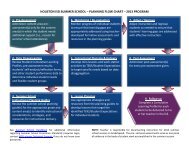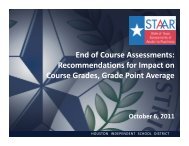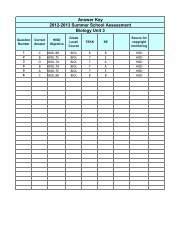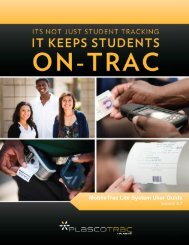SSK Unit 4.2 Planning Guide
SSK Unit 4.2 Planning Guide
SSK Unit 4.2 Planning Guide
You also want an ePaper? Increase the reach of your titles
YUMPU automatically turns print PDFs into web optimized ePapers that Google loves.
HISD PLANNING GUIDEEnglish Language Arts Grade 8SUMMER SCHOOL• ELPS C.2h Understand implicit ideas and information in increasingly complex spoken language commensurate withgrade-level learning expectations• ELPS C.3h Narrate, describe, and explain with increasing specificity and detail as more English is acquired.• ELPS C.4h Read silently with increasing ease and comprehension for longer periods.• ELPS C.5f Write using a variety of grade-appropriate sentence lengths, patterns, and connecting words to combinephrases, clauses, and sentences in increasingly accurate ways as more English is acquired.College and Career Readiness Standards (CCRS)• CCRS 2.B1 Identify new words and concepts acquired through study of their relationships to other words andconcepts.• CCRS 3.B1 Participate actively and effectively in one-on-one oral communication situations.• CCRS 4.B2 Listen actively and effectively in one-on-one communication situations.Key Concepts• genre- nonfiction expository• word meaningAcademic Vocabulary• conclusion• inferences• writing processEssential Understandings / Guiding Questions• organizational patterns• writing traits• purpose• Word roots and affixes provide the foundation to discover the meaning of unfamiliar words.1. What are affixes?2. What is the difference between a prefix and a suffix?3. What effect do affixes have on the meaning of a word?4. Why is it important to understand the root of a word?• Informational and procedural texts have specific organizational patterns to support the author’s purpose.1. What are some examples of informational texts/ procedural texts?2. What is author’s purpose?3. How do organizational patterns affect texts?• Valid inferences and conclusions are based on textual evidence.1. What is an inference?2. How do you draw conclusions?3. How will textual evidence help you make an inference or a conclusion?Assessment Connections• Performance Expectation- Students plan and draft an expository essay of sufficient length that includes organizedand accurately conveyed information, effective introductory and concluding paragraphs and a variety of sentencestructures, a controlling idea or thesis, an organizing structure (e.g. inductive/deductive, compare/contrast)appropriate to purpose, audience, and context, relevant information and valid inferences, rhetorical devices, andtransitions between paragraphs.Formative Assessment- Expository Essay Rubric• Students preview vocabulary that they encounter in the text to ascertain their knowledge and familiarity.Formative Assessment- Knowledge Rating Scale• Students use released STAAR items to gain familiarity with the stems.STAAR Released Items: Reading (Selection 1, Items 1-5, 7 and Selection 2, Items 4, 6, 7)Texas English Language Proficiency Assessment System (TELPAS): End-of-year assessment in listening,speaking, reading, and writing for all students coded as LEP (ELL) and for students who are LEP but have parentaldenials for Language Support Programming (coded WH). For the Writing TELPAS, teachers provide five writingsamples – one narrative about a past event, two academic (from science, social studies, or mathematics), and twoothers. - English Language Proficiency Standards (ELPS) - Literacy Leads the Way Best Practices - Aligned to Upcoming State Readiness Standard- State Process Standard R - State Readiness Standard S - State Supporting Standard© Houston ISD Curriculum2013 – 2014Page 2 of 9




